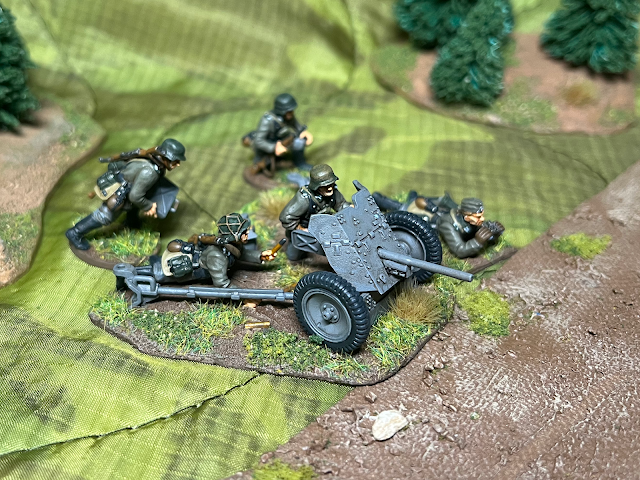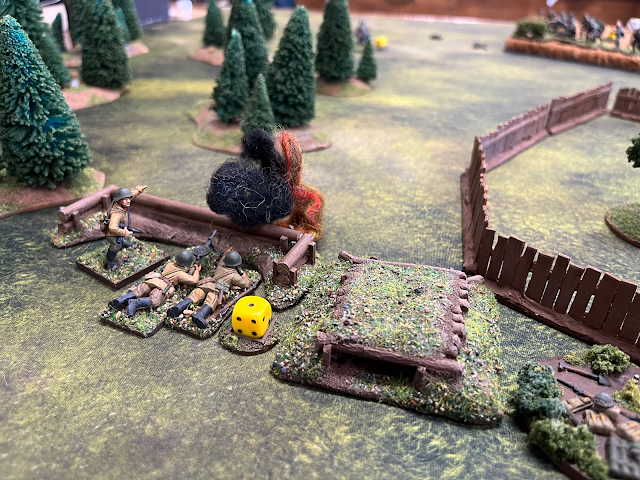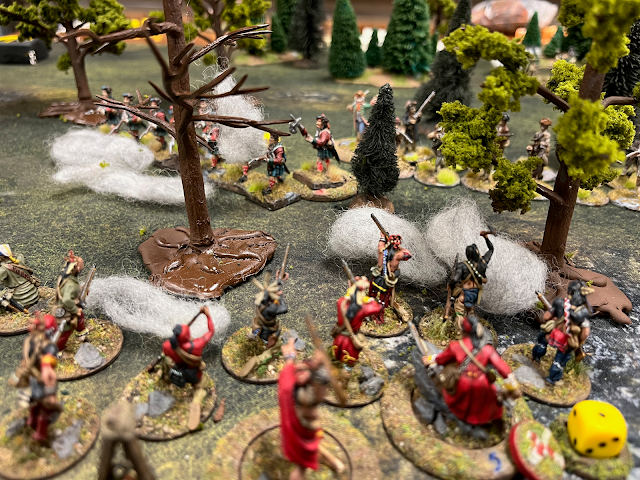Scenes from Barbarossa | Chain of Command
Met with some people I haven't gotten a chance to game with in a bit and got in two games of Chain of Command set in June or July of 1941, with German motorcycle troops advancing on a Soviet village.
No full battle report for this one, but I did take some photos here and there. We played Big CoC rules with two-squad platoons for the purposes of time, and that worked very well, I think. Our Soviet players had not played Soviets before in CoC, as I recall, so there was a bit of a learning curve, but it was good for teaching. I also got to field some of my newly painted models, like the Rubicon Panzer III E shown above, which is always nice.
German troops advance on a stream crossing near a Soviet farming hut, wary of Bolsheviks hiding inside.As the firefight kicks off, the German light mortar fires at entrenched Soviets on the other side of the stream to soften them up.The arrival of German armor makes the Soviet position much less tenable.Soviets deploy in force, hoping to bury the Germans under weight of numbers. These two squads are the first half of my Soviet platoon that I got painted in time for the game. The other half are in the works.It's too late, however. Two squads of Germans concealed in the crop fields shred the Soviet line and convince them to fall back, giving the Germans the win in the first game.The second game saw the Germans attacking a more built-up farming village. This game was cut short after the initial fighting, with the German Panzer IV missing the action and the Soviet BA-10 remaining off the table.
The Soviets realized the value of trenches in the first game, and mounted a stiffer resistance on one side, dug in among the cabins and hayfields of the village.
On the other flank, however, the Soviets rushed from their positions and tried to capture a German Jump Off Point. They paid for the mistake dearly, with a German flamethrower team stepping from the trees to torch them.A German squad pitched in their fire and a grenade for good measure, breaking the Soviet charge.We had to end there, with the German armor coming up and the Soviet right flank in disarray. Most importantly, we had all had a good time gaming and catching up.
Some black and white versions for that period-appropriate feel.
Although they were not used in these games, I can't not show off my recently finished halftracks. These are Warlord's 251 C's. The flag on the command halftrack is made of greenstuff and magnetized so it can be removed. I did this 1. To prove I could magnetize a flag and 2. To allow for removal of it in case someone I play with isn't comfortable with what is clearly a very hateful symbol.That's all for now, but I've been making great progress with my pile o' shame, so expect more from me soon.




















Great stuff - I am working on a similar project at the moment in between my 40K stuff - it's always interesting to see Barbarossa projects as it's an interesting period; even though they were strategically defeated early on these small games can illustrate that the Russians fought back tenaciously at a tactical level (often to the surprise of the invaders). The magnetised flag is a good idea - I might have to try that, as I want to include some air recognition flags but I am wary of doing so - magnetised versions might be a good compromise.
ReplyDeleteIn our group, the Soviets typically have a rough time, for whatever reason. But we've definitely had some early-war games go the other way, especially if the T-34s and KVs come out.
DeleteThe flag came out pretty well. I used a thin layer of petroleum jelly on the hood of the halftrack to carefully sculpt the thin sheet of green stuff around the shape of the armor plates and the stowage. It worked pretty well, though the thin green stuff is somewhat flexible. I actually coated it with a thin layer of Tamiya epoxy putty before priming. I'm not sure if that was strictly necessary, but seems like it made it slightly more robust.